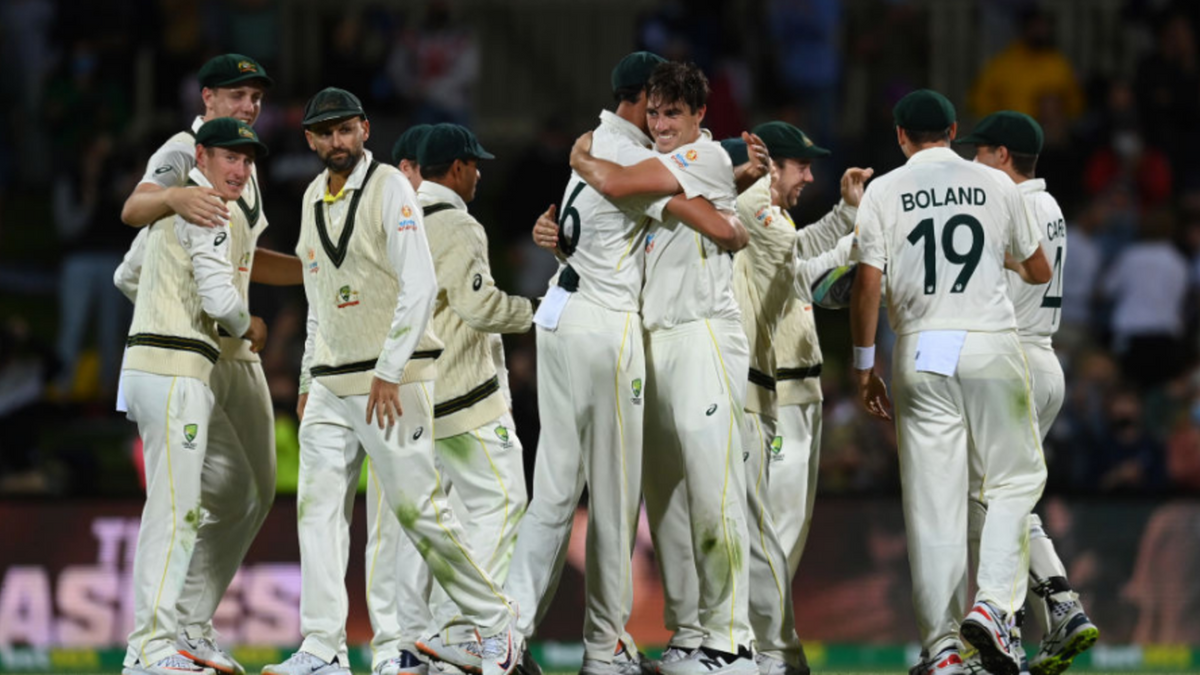
Australia gear up for their first overseas tour since the 2019 Ashes, as they take on Pakistan in Pakistan after a gap of 24 years. Currently world no.1 in the Test rankings, Pat Cummins’ side have a chance to not only consolidate their spot at the top but also show to people that they deserve to be there.
Australia’s recently demolition of England at home in the 2021/22 Ashes series allowed them to reclaim the top spot in the ICC Test rankings for the first time since May 2020. However, the feat was hardly met with widely held acknowledgement that they are the premier side in the world game. Besides playing their matches entirely at home since 2019, you have to go back even further to find their most recent overseas win – in New Zealand in 2015/16. Since then, they have toured Sri Lanka, India, Bangladesh, South Africa, the UAE (to play Pakistan) and England, with their best results being a 1-1 draw in Bangladesh in 2017 and the 2-2 draw in the Ashes two years later.
In this period, they have hosted South Africa, Pakistan (twice), England (twice), India (twice), Sri Lanka and New Zealand, winning six series, but it is the losses that will haunt them. Arguably one of the toughest countries to play cricket in, Australia went down to South Africa 2-1 in 2016/17, but the biggest blips are the twin series losses to India, in 2018/19 and 2020/21, with the latter coming at the hands of a relatively inexperienced side following injuries to a number of India mainstays. From January 2021, Australia did not play a single Test match anywhere until December, and that was against a relatively weak England at home, a win against whom took them to the top of the rankings.
While their ascension to the top of the ICC rankings suggests flaws in the system, Australia’s No.1 status also highlights the lack of a clear dominant force in world cricket currently, which prompted Harsha Bhogle to recently claim that it was “the easiest time in Test history to be No.1”. Australia have a tough schedule ahead, starting with the series against Pakistan on March 4, and if they can put in convincing performances consistently, which they should, considering the personnel they have, they can show the world that they deserve to be where they are.
A side packed full of greats
Australia have statistically one of the best Test bowlers of all-time as their captain, who also leads one of the most threatening pace attacks going – consisting of Josh Hazlewood and Mitchell Starc. In Scott Boland, Jhye Richardson and Michael Neser, they have a formidable brigade of back-ups who have yet to show what they are capable of abroad.
Nathan Lyon has 415 wickets to his name and is currently just 15 short of Ravichandran Ashwin’s tally. The fact that the Aussie off-spinner has managed to pick up 216 wickets at home, where conditions do not always have much to offer spinners, is evidence of his pedigree. With Australia scheduled Pakistan, Sri Lanka and India for Test series this year, Lyon will have the opportunity and the conditions to further show off his mettle.
The batting is similarly exciting. The emergence of Marnus Labuschagne has further strengthened the middle order, which also comprises of Steve Smith and Travis Head, with Usman Khawaja lurking not far away. Labuschagne and Smith average in the high fifties [56.92 and 59.87 respectively] while Head and Khawaja average in the early 40s [43.14 and 42.45 respectively]. With David Warner averaging close to 48 in the format at the top of the order, Australia have batters who have fared well consistently for a long time – though, and this will be tested in 2022, there are questionss over whether the majority of that group can transfer their dominant home form to overseas shores.
Combined with an equally threatening and experienced bowling line-up, on paper, they have one of the strongest sides in the world, and if all combine to pitch in game-after-game, they could form a unit that is hard to beat whatever the conditions. In Cameron Green, they also have the most exciting young all-rounder in world cricket.
Their potential journey to being the best in the world is also eased by the fact that India and New Zealand, the two sides that could compete with Australia for the tag, have recently been let down by indifferent performances. India, despite their impressive performances away in Australia and England, do not have a series win in New Zealand recently to their name, having lost in 2020, and the surprise defeat to a South Africa side in flux is a sting to their own credentials. The Kiwis, on the other hand, were unable to secure series wins at home against either Bangladesh and South Africa this winter. All of a sudden, the route to becoming the best Test in the world is extremely apparent.
Both India and New Zealand are also undergoing a transition of sorts, while Australia have an almost full-strength team of proven match-winners around them for at least the next few years, and even if they falter from time to time, the lack of competition and divide between teams gives them a golden chance to start a period of domination where they can justifiably be called the best in the world.








